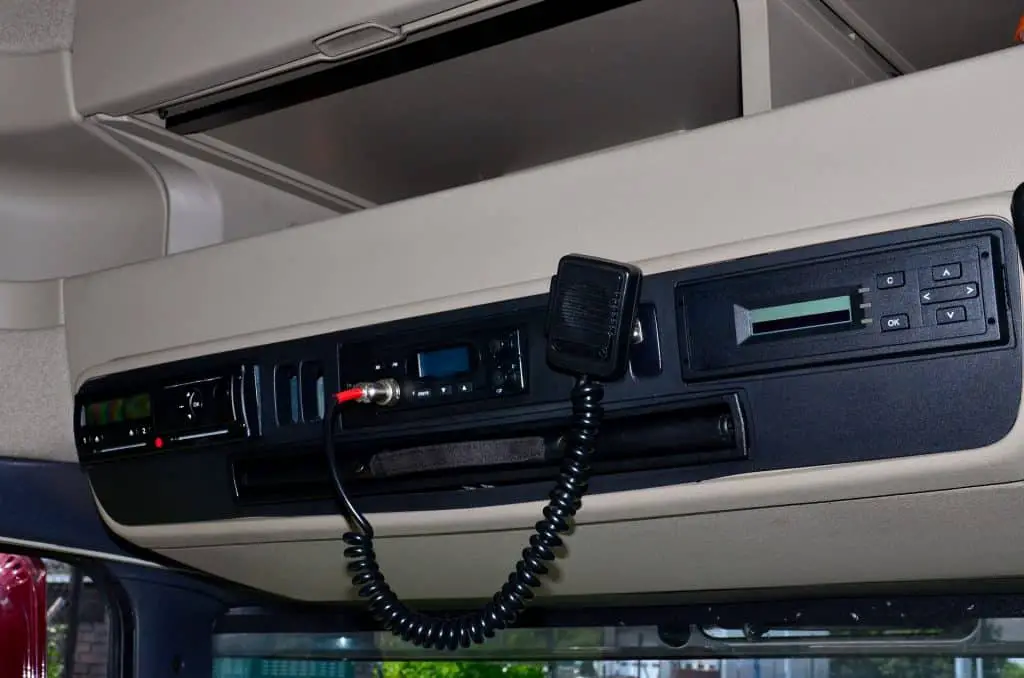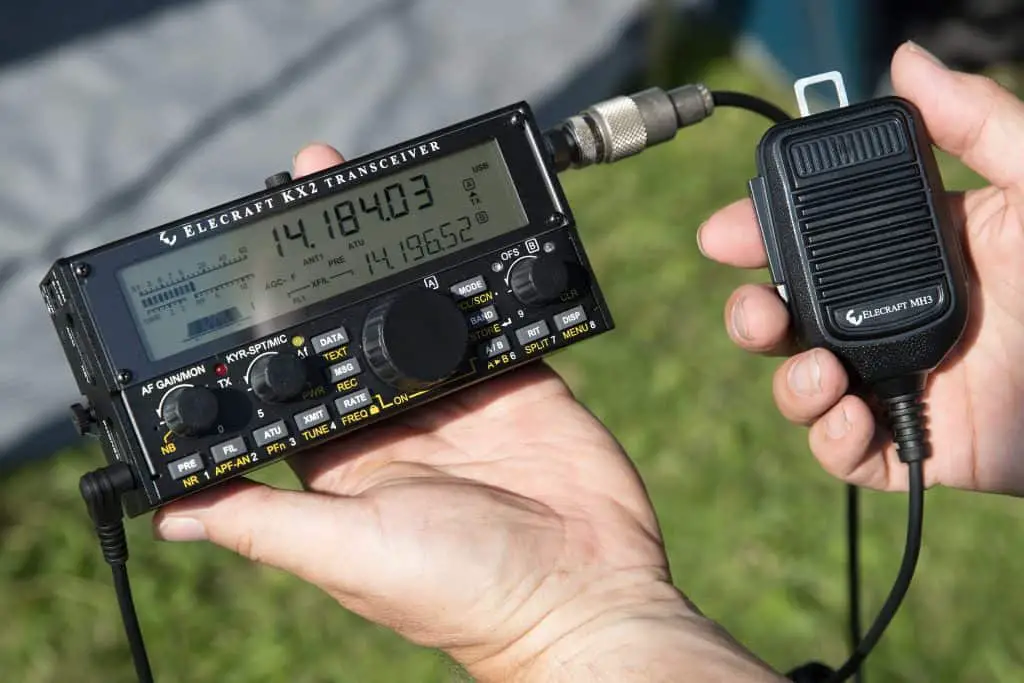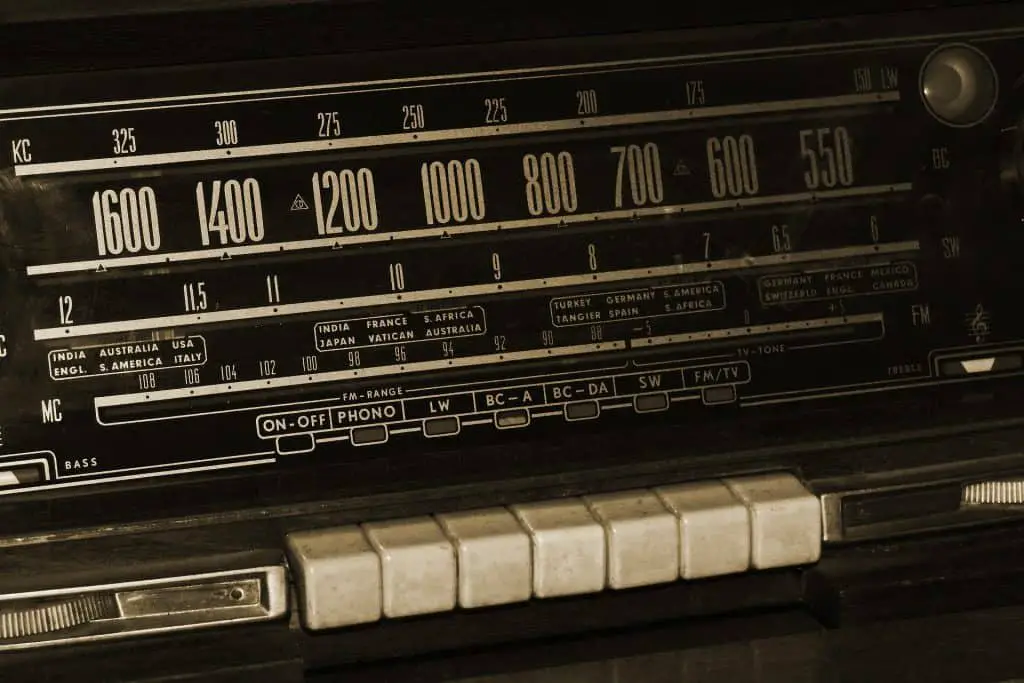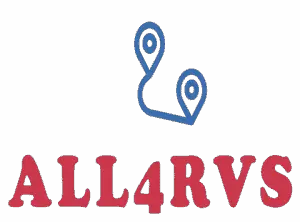Knowing the radio licences for RVers in Australia saves you a lot of trouble – mainly because it helps you choose only the radios you are allowed to use. That is why you must not skip this step. The Australian Communications and Media Authority (ACMA) categorises radio licences into three main types, and that’s what we will be elaborating on from here on.
Before everything else, may I ask you – Is it your first time considering a 2-way radio for your RV experience? If so, then I recommend that you check out first what every RVer needs to know about 2-way radios.
BLOG CONTENTS
Class licences that are not applicable to RVers
Demographics of amateur licenced radio operators
How much are the fees for radio licences?
Licence fees in other countries
What licence should RVers get?
Alright. Going back to the main point of this blog – ACMA has three main categories for radio users. These are the class licences, apparatus licences, and spectrum licences. Now let’s head on straight to the description of each.

CB radio
Class Licences
A class licence lets you operate common radio equipment on shared frequencies. This is where your 2-way radio and mobile phone come in. So, NO – you neither need to acquire documentary proof nor pay any fees to say that you are under a class licence. (Just as you don’t need any licence to use a mobile phone)
It may be confusing at first as to why is there a need to categorise this as a licence type when no such licence is actually issued. But consider it as just a formality.
Class licences have 15 types, but not all apply to RVers and such licences include devices other than your typical radios. So, breaking these down:
RV-applicable class licences
| CLASS LICENCE TYPE | APPLICABILITY |
| 27MHz handphone stations
|
For bushwalkers or in general, for communications at <1km range. |
| Cellular mobile telecom devices; Low interference potential devices (LIPD) |
These apply to RVers but are essentially out of topic Cordless communications devices
Although applicable, these are essentially out of the topic as well. Why? Because this licence allows you to use old-school phones such as personal handy-phones and cordless landline phones.
Citizen band (CB) radio stations
These are the general entry-level path for newbie radio users. This setup allows the general public to use 2-way radios on shared frequencies – much like café customers sharing a Wi-Fi connection.
Communication with a space object
Partly applicable, because this scope includes satellite phones. However, you must have a space licence to operate a satellite phone.
Overseas amateur visiting Australia
For foreign RVers who are amateur radio-licenced in their respective countries. Such RVers can operate radiocommunications devices in Australia subject to the scope of their licence and ACMA terms. Also, this provision is valid for up to 90 days only starting from their date of arrival.
Although RVers are eligible, such devices are not really for 2-way communication. Emergency beacons are designed to continuously transmit signals so that the government can quickly locate and rescue you. Therefore, it is an utter must that you activate such a device only in times of serious emergency. Visit the Australian Maritime page for full information.
Radio navigation satellite service
Similar to emergency locating devices, except that this licence allows the use of GPS receiving devices instead. A GPS receiving device helps you determine your actual location – practically like how Google Maps work on your phone, tablet or laptop. Digital 2-way radios can have GPS receivers integrated into them.
Class licences that are not applicable to RVers
Just for your information, as well as for you to also have an idea why they’re not applicable, here are non-RV-related class licences:
| CLASS LICENCE TYPE | APPLICABILITY |
| Aircraft and aeronautical mobile stations; Body scanners; Maritime ship station – 27 MHz and VHF |
As their names imply, these are obviously not applicable for RVers. |
| Intelligent transport systems (ITS) | Although RVers are affected by ITS, they are not key players in such systems. |
| Public safety and emergency response | Not applicable, unless you are a member or an employee of a public safety body or an authorised body. Regardless, the purpose of this licence is only to carry out public safety and emergency responses. |
| Radio-controlled models | It’s wise to consider these as not applicable since it’s rare for an RVer to operate his/her model plane, car, boat or train while on a trip. |
Apparatus Licences
An apparatus licence allows you to operate transmitters and/or receivers at a specific place and frequency range – that’s including the operation of hobby radios at frequencies that aren’t available to the general public. You can well compare it to a Youtube premium subscription where you can get access to content that is not available for free users, while still being limited to content that is allowed in your country.
Apparatus licences may be valid for up to 5 years, and are comprised of 16 transmitter licence types and 5 receiver licence types.
Although that is the case, I will be focusing here on only one type of apparatus licence – the amateur radio licence. The other apparatus licences generally accept only specialised qualifications and consequently are intended for specialised purposes. A few examples are aeronautics, aircraft and broadcasting licences. So, let us stick to this one type that’s straightforwardly related to RVers.

Amateur radio licence
This licence type has three tiers namely, Foundation licence, Standard licence and Advanced licence – arranged from the most basic to the most comprehensive. In effect, each tier differs in:
- range of frequencies upon which licensees can operate;
- coverage – that is, how far can licensees communicate or get good signals); and
- type of radiocommunications that are allowed to be operated
As an amateur radio licenced RVer, you may choose to have a specific frequency assigned just for you. Otherwise, you may share a certain frequency with other users. In any case, the Australian Maritime College (AMC) will recommend you a “call sign” which you must mention whenever you communicate. In practical terms, this call sign is like your ID number, and (as of December 2020) is in the format:
VK$aaa up to VK$zzz
Where:
VK – country code for Australia
$ – code for the specific Australian state; in explicit terms,
-
-
- 0 – Antarctica
- 1 – Australian Capital Territory
- 2 – New South Wales
- 3 – Victoria
- 4 – Queensland
- 5 – South Australia
- 6 – Western Australia
- 7 – Tasmania
- 8 – Northern Territory
- 9 – Other Australian Territories
-
aaa – 3-letter code that’s specific to you (note that these are all lowercase letters)
However, Advanced licensees may deviate from the above format. As a substitute, they may choose from the following formats:
- VK$aa
- VJ$a
- VK$a
- VK$GGA-GGZ (only for those under Girl Guides Australia)
- VK$SAA-SDZ (only for those under the Scouts Association of Australia)
So for example you are a Victorian who has just passed his/her standard licence. You wanted your 3-letter code to be “dml”. Therefore, your call sign would be “VK3dml”. Easy, right?
Thankfully, the AMC has made public a database of call signs that are up for grabs. That way, you can be inspired to do well in your licence exams, certainly knowing that your desired call sign is available.
The amateur radio licence advantage
What’s good with this licence is that you’re allowed to transfer it to someone else, or you may let someone else use a device under your licence. Visit the AMCA amateur radio licence page for more information, especially on terms and conditions.
Operable frequency bands and coverages
Wireless Institute of Australia is Australia’s main hub for radio enthusiasts. According to them, you can operate your devices within the following capacities:
| FOUNDATION LICENCE | |
| Frequency Range | Typical Coverage |
| 3.5 – 3.7 MHz | Day: up to 150km Night: up to 3000km |
| 7 – 7.3 MHz | 1000km |
| 21 – 21.45 MHz | Usually by day only, but on a worldwide scope |
| 28 – 29.7 MHz | Worldwide coverage, but only during sunny hours (3000km in summer) |
| 144 – 148 MHz | Both local and worldwide |
| 430 – 450 MHz | 2000km local coverage, but also capable of worldwide coverage |
| STANDARD LICENCE | ADVANCED LICENCE |
| Frequency ranges include those allowed by the Foundation licence, plus the following: | Frequency ranges include those allowed by the Standard licence, plus the following: |
| 14 – 14.35 MHz | 135.7 – 137.8 kHz |
| 52 – 54 MHz | 472 – 479 kHz |
| 1240 – 1300 MHz | 1.8 – 1.875 MHz |
| 2400 – 2450 MHz | 3.776 – 3.8 MHz |
| 5650 – 5850 MHz | 10.1 – 10.5 MHz |
| 18.068 – 18.168 MHz | |
| 24.89 – 24.99 MHz | |
| 50 – 54 MHz | |
| 2300 – 2302 MHz | |
| 3300 – 3425 MHz | |
| 3492.5 – 3542.5 MHz | |
| 3575 – 3600 MHz | |
| Various frequencies above 5850MHz, up to 250GHz | |
Looking at the above table, you can well notice the scope difference between the three tiers. More importantly, we can see that the Foundation amateur radio licence is more than suitable as far as RVing is concerned.
Clubs for amateur radio operators
Naturally, there are clubs for licenced amateur radio operators. It would be too boring if you try to figure out things on your own, even when already licenced. This holds especially when you’re into retro radios. There are only a few people out there who can relate to you. Fortunately, the AMC keeps an updated list of such clubs all over Australia, so feel free to choose one.

Exam conditions for amateur radio licence applicants
Since it’s a legitimate licence, amateur radio licences require eligible applicants to pass all examinations before they can be officially recognised. The AMC lists the following exams which applicants are expected to take:
| EXAM TYPE | DURATION | PASSING MARK |
| Written exam | ||
| Foundation | 30 minutes | 70% |
| Standard | 60 minutes | |
| Advanced | 90 minutes | |
| Regulations exam | 30 minutes | |
| Practical exam | 40 minutes | Marked as “competent” for all learning outcomes |
Spectrum Licences
You may call the spectrum licence the “VIP of radiocommunications licences”. That is because the frequencies assigned to it are extremely rare, and its validity is up to 15 years! And because they’re rare, spectrum licences are sold only via auction, tender, set price, or negotiation.
Benefits and downsides of this licence. Well, you’ll be able to operate a lot more types of devices – be it radio, transmitter or receiver. However, you will still be limited to a specific area and a specific frequency range.
Demographics of amateur licenced radio operators
Not many will mention this so I will.
As of December 2015, there are 14,000 licenced radio amateurs in Australia.
– Phil Wait, Wireless Institute of Australia
That jives with the report of Hayden Honeywood, an advanced amateur radio operator with the callsign VK7HH, that there are about 14,760 licenced amateurs in Australia as of January 2021.
A 760 rise in 5 years? Given that Aussies are notorious RVers, it is quite surprising to learn that only a few are licenced amateurs. So what does this say about the downside of amateur radio licences for RVers in Australia? Of course, there are many possible factors, but one of them is probably the fees. Read on to know why.
How much are the fees for radio licences for RVers in Australia?
Since class licences are free and spectrum licence fees are agreed upon (as explained earlier), we’ll talk about amateur licence fees only.
To apply for an amateur non-assigned licence, expect to pay the following:
- $90 exam fee (inclusive of both written and practical exams if conducted on the same day) – regardless of amateur licence tier
- $90 regulations exam fee
- $29 issuance of a licence as per ACMA (July 2021)
Now if you want to have your own frequency (“assigned licence”), the additional payment would range from $25 to $60. That’s because you may choose to have whatever is the next available call sign, or you may have your own. Therefore, the bare minimum payment for an amateur operator licence may be:
- For non-assigned: $209 on the first year + $54.76 renewal fee every year; or
- For assigned: $234 on the first year + $54.76 renewal fee every year
As per July 2021, the AMCA updated its tax fees for amateur radio licences. Moreover, they are generating a fee calculator to help licensees see how taxes are calculated and how much is their due. To help AMCA test out their new fee calculator, email your interest at spectrumpricing@acma.gov.au.
I thought apparatus licence fees are valid for up to 5 years? Yes, but remember that there are lots of licence types under apparatus licences. And for amateur radio licences in general, it’s yearly. Yep, it’s a sad truth.
Licence fees in other countries
In the UK, the fees below apply. Plus, amateur licences are valid indefinitely – all licensees have to do is to verify their details now and then.
- Exam fee – from £27.50 to £37.50, depending on the licence tier (as per the Radio Society of Great Britain)
- Issuance of licence – free when applied for online; £20 for paper applications by applicants who are under 75 years old
- Assigned call sign – no fee specified; instead, a fee applies only when you choose a formerly issued prefix
On the other hand, applicants for such licence in the United States require the fees below (in USD) as of December 2020.
- Exam fee – $10
- Issuance of licence – $35
- Renewal of licence (every 10 years) – $35
- Assigned call sign (optional) – $35
From these data, we can observe that Australia’s amateur radio licence fees are quite more expensive.
What radio licences for RVers in Australia should get?
So, in the end, what radio licences for RVers in Australia should get? This depends entirely on your purpose and experience – plus a bit of preference. To help you decide, choose your licence based on these conditions:
| LICENCE TYPE | CONDITIONS WHERE IT IS USED BEST |
| Class licence |
|
| Apparatus licence (amateur radio licence) |
|
| Spectrum licence |
|
So there you go. I hope this post helped you know more about the radio licences for RVers in Australia. Check out other posts here too for more tips and valuable information on RVing.
